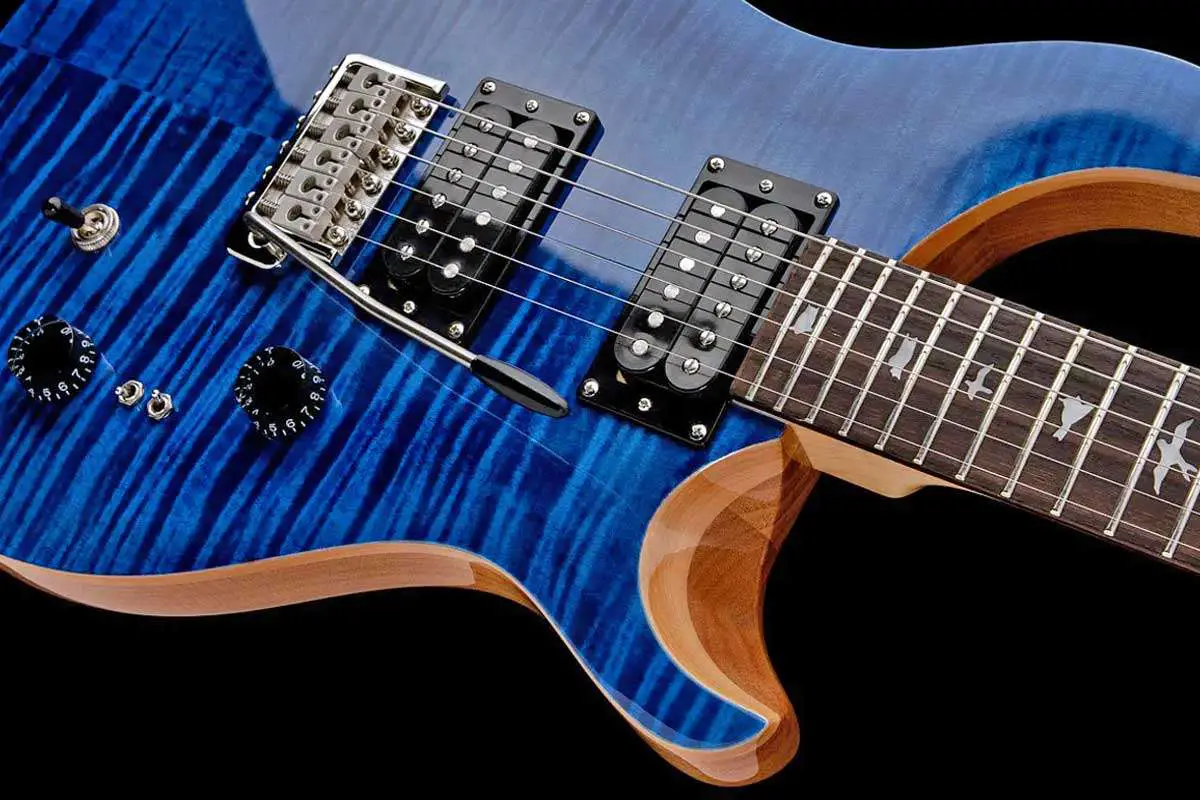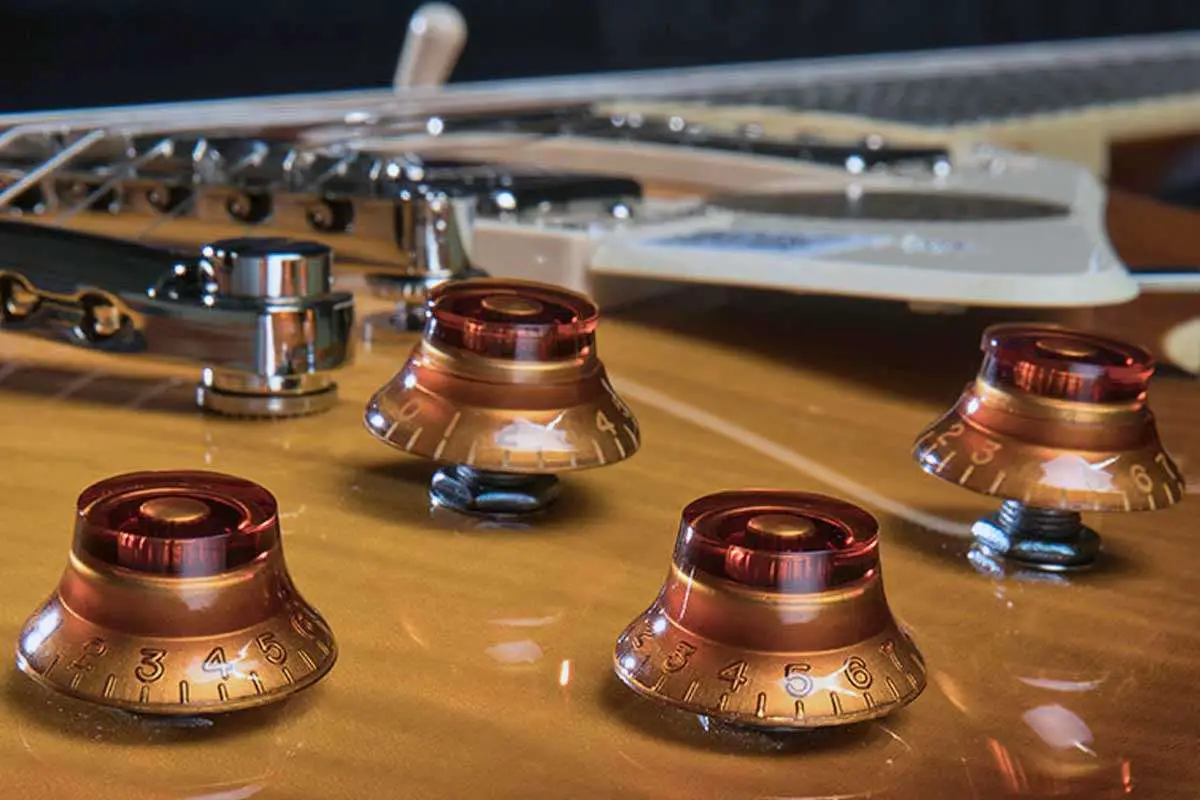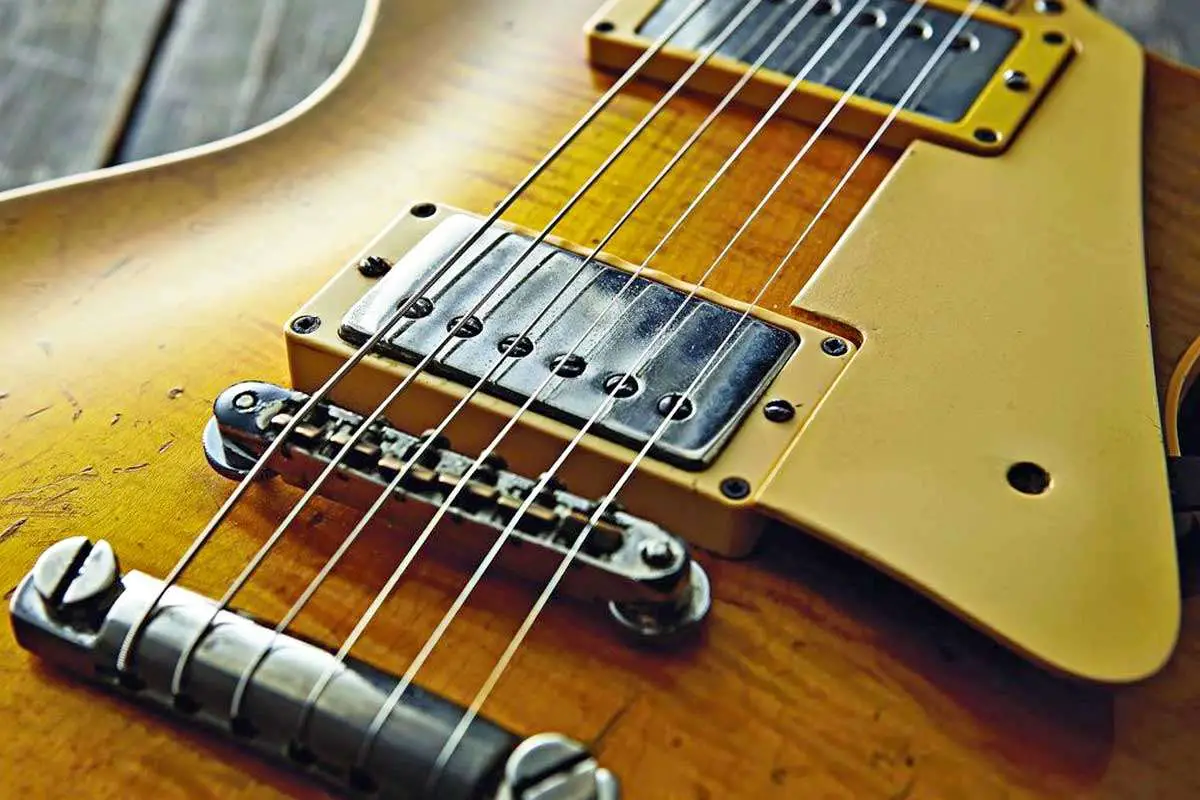Coil splitting is a guitar modification technique that allows you to unlock the versatility of a humbucker pickup, essentially providing the best of both worlds between a humbucker and a single-coil pickup. When you split a coil, you’re tapping into just one of the two coils in a humbucker, thus the pickup mimics the lighter, crisper sound characteristic of a single-coil. This is particularly useful if you’re looking for a range of tones from your guitar without the need to switch instruments.
The beauty of coil splitting lies in its ability to drastically change your guitar’s tone without major modifications. With the pull of a knob or the flick of a switch, your humbucker can shift from its thick, warm output to the brighter tone associated with single-coil pickups. This transition offers you the high output and noise cancellation of a humbucker when you need it and the sharp, articulate sound of a single-coil when you don’t. The resulting sound is thinner and may have a lower output, but it’s ideal for genres that require a more pronounced twang or cut-through-the-mix edge.

Fundamentals of Coil Splitting
In exploring coil splitting, you tap into a guitar’s versatility, achieving both the warmth of a humbucker and the clarity of a single coil.
What Is Coil Splitting?
Coil splitting is the process of deactivating one coil in a humbucker pickup, essentially transforming it into a single coil. Humbuckers typically have two coils of wire wrapped around magnets, designed to “buck” hum by cancelling out interference.
When you engage a coil split, you cut the connection to one coil, which significantly reduces the output and alters the sound profile. This function is often enabled by a push-pull knob or toggle switch on your guitar.
Differences Between Coil Splitting and Tapping
Coil splitting should not be confused with coil tapping. While coil splitting turns off one coil, coil tapping involves accessing a secondary “tap” point on the pickup winding before its full output potential.
This tap provides you with a sound that is different in tone, usually a lower output closer to that of a vintage pickup. Unlike coil splitting, which offers the distinct contrast between a humbucker and a single coil, coil tapping allows for a subtler shift in tonality from the same coil.
In simplest terms:
Coil Splitting:
- Disconnects one coil in a humbucker
- Results in a true single coil sound
- Generally offers a brighter tone with less output
Coil Tapping:
- Accesses a secondary winding point in a single coil
- Provides a different sound from the same coil
- Tends to offer a more nuanced change in output and tone
When you are making a decision between coil splitting and tapping, consider the variety of sounds you wish to achieve with your guitar. If you desire the stark contrast between the fat, warm tones of a humbucker and the crisp, sharp tones of a single coil, coil splitting might be your preference. However, if subtlety is key and you’re looking for a palette of tones within the realm of high-output configurations, coil tapping might suit your needs better.
Technical Aspects of Coil Splitting
Coil splitting allows you to achieve the bright, crisp tones of a single-coil pickup from a humbucker, expanding your guitar’s tonal possibilities. By understanding the wiring and electrical components that facilitate this, you can manipulate your sound with the flip of a switch or the pull of a knob.
Wiring and Electrical Components
When you perform a coil split, you’re modifying a humbucker’s wiring so that only one coil remains active. Humbuckers typically have 4-conductor wiring, which includes a hot lead, a ground, and two additional wires that connect the coils in series. By interrupting this series connection, you’re able to isolate and deactivate one coil, effectively turning the humbucker into a single-coil pickup.
To verify wiring connections, use a multimeter to trace the path of electricity and ensure the proper coil is grounded. When the split is engaged, the ground wire of the coil you’re deactivating will be connected to the circuit’s ground, halting its output.
Splitting a Humbucker
Unlike coil tapping, which accesses a secondary coil winding point for a different sound, splitting completely cuts out one of the humbucker’s coils from the circuit. If your guitar’s pickup has 3-conductor wiring, splitting options may be limited, as this setup is often associated with a single braided hot lead, requiring a separate ground for each coil.
For 4-conductor pickups, you’ll find a wire from each coil that can be rerouted to ground or disconnected, thereby achieving the split. Ensure that the remaining active coil’s start and end points are still connected to the circuit’s hot and ground to maintain functionality.
Push-Pull Pot and Toggle Switch
Manipulating the coil split is typically done via a push-pull pot or toggle switch. The push-pull pot, integrated into a volume or tone control, allows you to activate the split by pulling the knob upwards. In contrast, a toggle switch necessitates an additional switch position on the guitar, providing an explicit on-off action for the split.
For a push-pull pot:
- Pull: Disconnects one coil on the circuit, leaving one coil active.
- Push: Reconnects the coils in series, reverting to humbucking mode.
For a toggle switch:
- Engage the switch to open the circuit and ground one coil.
- Toggle off to close the circuit for standard humbucker operation.
This hands-on control gives you the ability to switch between a thick humbucker sound and the distinct sharpness of a single-coil, mid-performance.
Practical Usage & Considerations
Coil-splitting serves as a vital technique, empowering you to widen your tonal palette with the flip of a switch. It merges the robustness of a humbucker pickup with the clarity of a single-coil tone, paramount for adaptability across various genres.

Adjusting for Desired Tone
To grasp the nuances of coil-splitting, think of it as an aural chameleon. It allows your humbucker-equipped guitar, such as a Les Paul, to mimic the thinner, crisper sound typically associated with a Stratocaster. Engaging a push-pull pot modifies the signal path, transforming the dual-coil humbucker to a single-coil operation. The resulting tone is brighter and may cut through a mix with more presence, ideal for articulate leads or funk-inspired rhythm work.
Influences on Volume and Output
Expect a noticeable shift in volume and output when engaging coil-splitting. Disconnecting one coil decreases the output level, giving a quieter sound compared to the full humbucker configuration. This reduction can be both a strategic move for dynamic playing or a consideration for maintaining balanced volume levels when switching between pickup modes.
| Pickup Configuration | Volume Level |
|---|---|
| Humbucker | Higher |
| Single-Coil | Lower |
Choosing the Right Guitar
Your choice of guitar is a personal choice that affects how coil-splitting will function and sound. A guitar with high-quality pickups and circuitry, like a well-crafted Les Paul, ensures that coil-splitting achieves its full potential. Conversely, not all guitars come equipped with coil-splitting capabilities, so selecting a model with a built-in push-pull pot or adding one after-market can be crucial for those seeking this versatility.
Remember, while coil-splitting can add diversity to your sound, the physical properties of the guitar will still influence the final outcome. The tonewood, construction, and inherent qualities of each instrument shape the single-coil tone even when split.
Advantages and Trade-offs
When considering coil splitting for your guitar, understanding the balance between its benefits and potential trade-offs is crucial. This section will guide you through the specific implications of noise and interference, signal integrity, and the balancing of tones in the context of using pickups with coil-splitting capabilities.

Noise and Interference
Coil splitting can significantly affect the amount of unwanted noise and interference you experience. While humbucking pickups are known for their ability to cancel hum, selecting just one coil might reintroduce some noise. This single-coil sound may be susceptible to electrical interference but can offer a vintage sound reminiscent of classic pickups.
Maintaining Signal Integrity
Reducing a humbucker to a single coil through coil splitting results in a drop in output power. This reduction can lead to a perceived loss in richness and fullness of the sound, but at the same time, it provides a clearer tone. You might notice that your guitar has a sharper bite, especially useful for certain playing styles or genres.
Balancing Tones
Coil-split pickups offer considerable tonal versatility, allowing you to switch between the thick, rich sounds of a humbucker and the bright, crisp tones of a single-coil. This gives you the ability to adapt your sound to different musical contexts without changing instruments, although the split-coil tone may sometimes be perceived as thin compared to the full humbucker setting.
Manufacturers & Options
When looking to modify your guitar’s tone, coil splitting is a popular technique that allows you to toggle your humbucker to act like a single-coil pickup. Different manufacturers offer various models with specific options catering to this functionality.
Popular Brands and Models
Seymour Duncan and Fralin Pickups are two significant players in the market, offering a range of humbucker pickups adaptable for coil splitting. For instance, Seymour Duncan provides a variety of 4-conductor humbuckers, which are suitable for this modification. One prominent model is their Pearly Gates, which can deliver a classic vintage tone when split.
Fralin Pickups, on the other hand, offers the Pure P.A.F. humbucker, ideal for a vintage sound. This lower-output humbucker, when coil-split, produces a brighter single-coil tone while retaining clarity. Below is a concise list of some popular models known for their coil-splitting capabilities:
- Seymour Duncan’s Pearly Gates
- Seymour Duncan’s JB Model
- Fralin Pickups’ Pure P.A.F.
- Fralin Pickups’ High Output Humbuckers
Related: The Different Types of Pickups
Custom and Aftermarket Choices
For players seeking a personalized tone, custom and aftermarket coil-splitting options are available. Custom winders can provide hand-wound P-90s or other humbucker pickups tailored to your specific sound preferences. Aftermarket products enable guitarists to transform virtually any humbucker-equipped guitar into a coil-splitting machine, giving you the aperture to fine-tune your tone.
Signature Sounds
Coil splitting can importantly influence your guitar’s voice, offering a versatile range of sounds. High-output humbuckers, when split, may lose some power but can achieve that coveted single-coil sparkle. The P-90, known for its raw, vintage sound, splits into a thinner, yet gritty tone. Be mindful that the change in sound can vary based on the pickup’s original output and the quality of the coil-splitting implementation.
- High Output Humbuckers: Retain punchiness; best for heavier music genres when split.
- Pure P.A.F.: More subtle split sound; excels in jazz, blues, and classic rock styles.
- P-90: Known for a balance between single-coil brightness and humbucker warmth when split.
Installation and Modification
Installing a coil-splitting system into your guitar can enhance its versatility by allowing you to transition effortlessly between humbucker warmth and single-coil clarity. Proper installation requires precision and attention to detail to maintain your guitar’s sound quality and functionality.
Step-by-Step Installation Guide
Before starting the installation process, ensure you have a 4-conductor humbucker, a push-pull pot or mini-toggle switch, and necessary tools such as screwdrivers and soldering iron. Follow these steps:
- Remove the strings and gain access to the guitar’s electronics.
- Identify the red and white wires from your humbucker; these will be soldered together and attached to the switch to enable the split.
- Wire the push-pull pot or toggle switch, ensuring that the green wire (start of south coil) and bare wire (ground) are properly connected to the ground.
- Solder the red and white wires to the switch. When activated, this connection will cut off one coil, creating a single-coil sound.
- Reassemble your guitar, restring it, and test the new modification.
Common Mistakes and Solutions
Common mistakes include incorrect soldering and wiring the wrong leads. A misplaced solder can cause circuit issues and unwanted vibrations. Double-check your connections and:
- Confirm that the red and white wires are soldered together and not connected to ground.
- Ensure the green and bare wires are correctly attached to ground, free of cold solder joints.
- Use a resistor in parallel with the coil being shut off to maintain output level and quality—referred to as a partial tap resistor.
Coil Splitting in Different Genres
Coil splitting offers you a wide tonal palette, enabling versatile guitar sounds suitable for various genres. This functionality can help you achieve the desired tone whether you’re playing searing rock solos, smooth jazz melodies, or twangy country licks.
Rock & Blues Applications
In rock and blues, dynamics and expressiveness are paramount. Utilizing a coil-split HSS (humbucker, single, single) pickup configuration guitar can let you switch between the powerful, full-bodied tone of humbuckers and the brighter, cutting sound of a single coil. For stinging leads and ringing chords, you might engage the humbucker, then split the coil for crisp, articulate clean passages or punchy rhythms.
Jazz & Country Preferences
Jazz and country genres often favor clear, clean tones that highlight the intricate phrasing and chordal work characteristic of the styles. Coil splitting in an HSH (humbucker, single, humbucker) configuration offers you the flexibility to produce warm, fat tones typical of jazz or the sharp, twangy sounds found in country music’s palette. With the coil split engaged, you get a sound reminiscent of traditional single-coil pickups, ideal for jazz’s nuanced low gain settings or the bright, clean licks in country.
Metal & High-gain Settings
Lastly, metal and genres requiring high-gain settings usually rely on the raw power of humbuckers to cut through dense mixes and offer sustain. However, coil splitting provides an additional layer of tone shaping, allowing you to switch to a thinner, more articulate single-coil sound when playing clean sections or for certain lead techniques where note definition is crucial. While coil-tapping can reduce the output for a cleaner sound, coil splitting in high-gain situations serves to keep your sound versatile without losing too much of that essential power.
Useful Tips and Insights
When it comes to getting the most out of coil splitting, being armed with the right tips and insights is crucial. This includes advice from industry experts, exploring creative wiring options, and knowing how to troubleshoot common issues effectively.
Expert Advice
Tyler Delsack, the manager at Fralin Pickups, emphasizes that the output of your pickup can significantly impact the effectiveness of coil splitting. It’s important to remember that pickups with a lower output may sound weak when split. For example, splitting a 7.5K Humbucker leaves a 3.75K Single Coil, which can seem underpowered. Always consider the output of your humbucker before you proceed with a split to ensure you maintain a robust tone.
Creative Wiring Options
Exploring wiring options can vastly improve your guitar’s versatility. If you’re looking to achieve a brighter tone from your coil split, you might want to consider splitting to the south coil. Alternatively, splitting to the north coil can provide a warmer sound.
- Standard Coil Splitting: A mini-toggle switch can be wired to split your humbucker.
- Series/Parallel & Phase Reversal: Combining coil splitting with series/parallel switching or out of phase wiring can unlock new tones.
Here’s a simple wiring option for a coil split using a mini-toggle switch:
| Switch Position | Circuit State | Wire Connection | Resulting Tone |
|---|---|---|---|
| Up | Coil Split Engaged | White wire to ground | Brighter, single-coil tone |
| Down | Full Humbucker (No Split) | No connection | Full, rich humbucker tone |
Troubleshooting Common Issues
If you encounter problems after splitting your coil, such as a significant drop in output or a thin sound, check your wiring first. Ensure that the white wire (or the color specified in your pickup’s wiring diagram) is correctly connected to the switch. Also, inspect the red wire if your setup uses a four-conductor humbucker – it might be causing the coil to be out of phase if not properly wired. If issues persist, consulting an experienced guitar technician can often lead to a quick solution.
